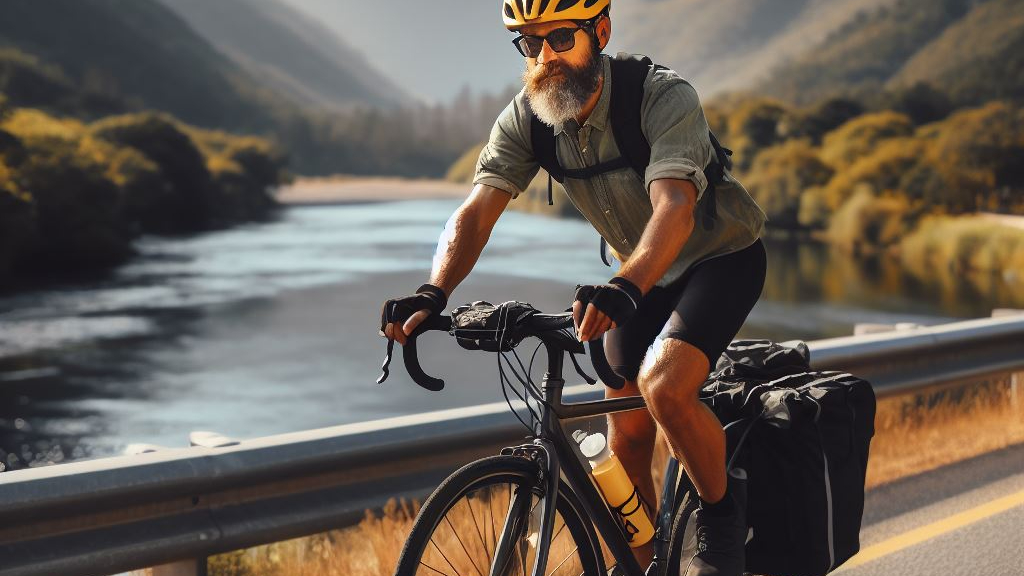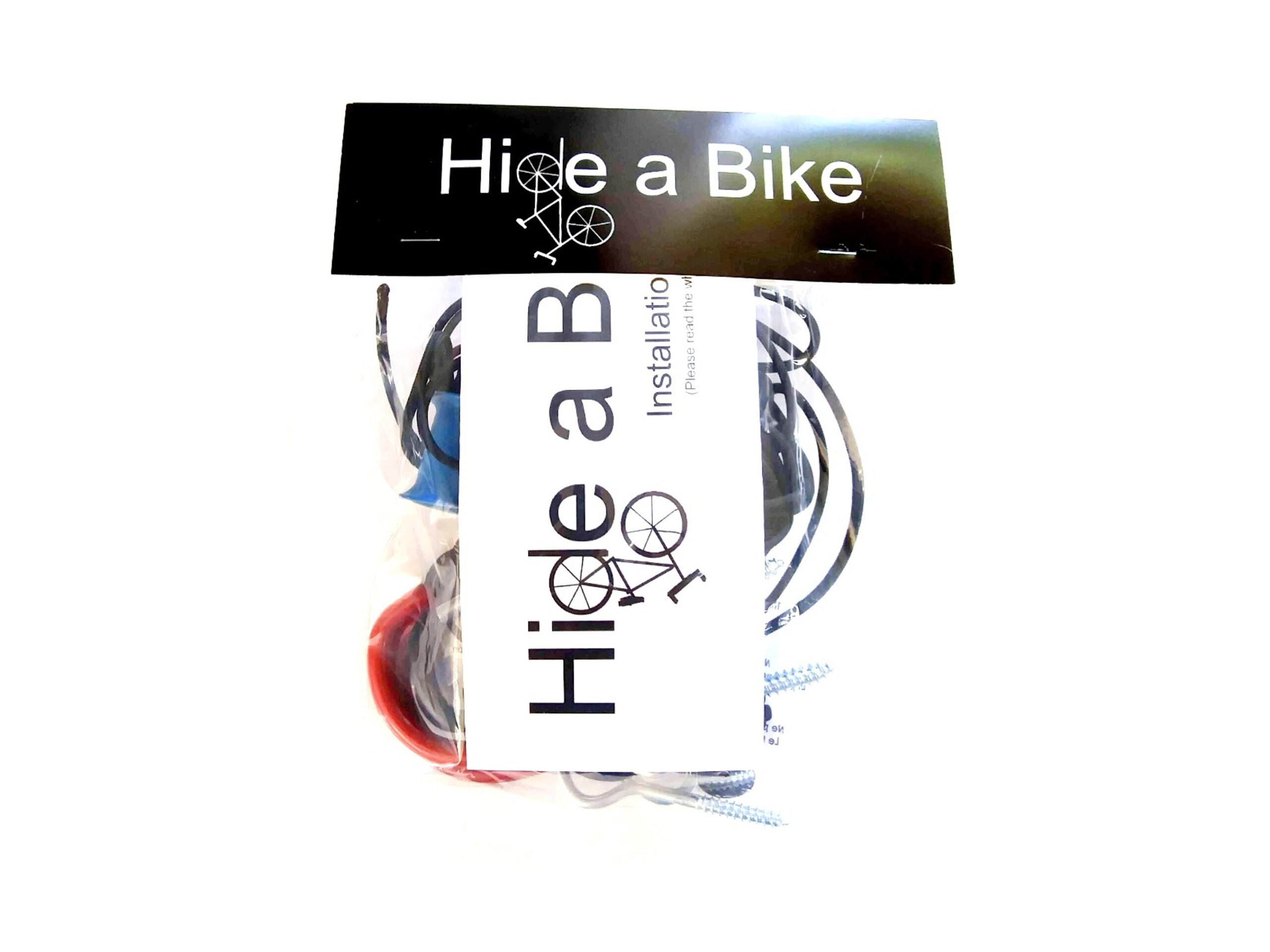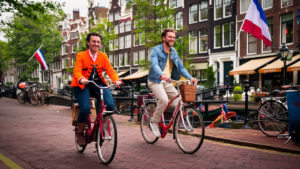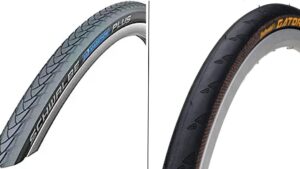How To Adventure Guide For Eco-Friendly Bike Touring

Discover eco-friendly bike touring tips, from gear selection to waste reduction, in our guide to sustainable adventure. Explore responsibly today!
In a world increasingly conscious of its environmental impact, the allure of bike touring has never been stronger. The freedom of the open road, the whisper of the wind in your ears, and the thrill of exploration all await those who embark on this sustainable adventure. But with great freedom comes great responsibility. Sustainable bike touring isn’t just about discovering breathtaking landscapes; it’s about preserving them for future generations.
1. Choosing The Right Gear
When it comes to sustainable bike touring, your gear choices play a crucial role in minimizing your environmental impact. By selecting eco-friendly gear, you not only reduce waste but also contribute to a more sustainable outdoor industry. Here are some tips for making responsible gear choices:
Opt for Sustainable Materials:Look for bikes made from sustainable materials like bamboo or aluminum, which have lower environmental footprints compared to carbon fiber or steel. Choose accessories and clothing made from recycled or organic materials. Brands increasingly offer eco-conscious options that are both functional and environmentally friendly.
Prioritize Durability:Invest in high-quality, durable gear that will withstand the rigors of your bike tour. Long-lasting equipment reduces the need for replacements, minimizing waste. Consider gear with repairable or replaceable parts. This extends the lifespan of your equipment and reduces the overall environmental impact.
Energy-Efficient Lighting:Equip your bike with energy-efficient LED lights powered by rechargeable batteries or dynamo hubs. This reduces the need for disposable batteries and minimizes waste.
Choose Multi-Use Items:Opt for multi-use gear whenever possible. For example, select a versatile camping stove that can cook a variety of meals and reduce the need for disposable utensils.
Pack Light:Keeping your gear to a minimum not only reduces the physical load on your bike but also saves energy during your rides. Lighter loads require less effort to pedal, reducing your carbon footprint.
Support Eco-Conscious Brands:Research and support brands committed to sustainability. Many companies are now dedicated to reducing their environmental impact and producing gear with sustainability in mind.
By making thoughtful choices in your gear selection, you can embark on your bike tour with the peace of mind that you’re reducing waste and contributing to a more sustainable outdoor culture. In the next section, we’ll explore strategies to further reduce your carbon footprint during your journey.
2. Reducing Your Carbon Footprint
One of the fundamental aspects of sustainable bike touring is minimizing the environmental impact of your journey. Biking itself is a low-carbon mode of transportation, but there are additional steps you can take to further reduce your carbon footprint:
Plan Efficient Routes: Carefully plan your routes to minimize unnecessary detours or steep climbs, which can increase energy consumption. Utilize bike-friendly infrastructure and designated cycling routes whenever possible.
Public Transportation: Consider using public transportation, such as trains or buses, to reach your starting point. This reduces the need for long-distance car travel to your tour destination.
Bike Maintenance: Keep your bicycle well-maintained. Regularly lubricate the chain, check tire pressure, and ensure your bike is in optimal working condition. A well-tuned bike is more energy-efficient.
Efficient Riding Techniques: Learn energy-saving riding techniques like drafting behind other cyclists to reduce wind resistance or maintaining a consistent pace to conserve energy over long distances.
Lightweight Packing: Traveling light not only eases the physical demands on your journey but also reduces the energy required to pedal. Pack only what’s necessary and consider the weight of your gear.
Offset Your Carbon Emissions: Consider carbon offset programs that allow you to invest in environmental projects to balance out the emissions generated during your bike tour. Many organizations offer opportunities to support reforestation, renewable energy, or clean water initiatives.
Educate Yourself: Stay informed about the environmental issues affecting the areas you’ll be touring through. Understanding local environmental concerns can help you make conscious choices during your journey.
By implementing these strategies, you can make your bike touring adventure even more sustainable and environmentally friendly. In the next section, we’ll delve into responsible camping and accommodation options that align with your eco-conscious approach.
3. Responsible Camping And Accommodation
As you embark on your eco-friendly bike touring adventure, where you rest your head for the night matters just as much as your gear and riding habits. Sustainable camping and accommodation choices can significantly reduce your environmental impact:
Leave No Trace Principles: Embrace the Leave No Trace (LNT) principles, which promote minimal impact camping. Pack out everything you bring in, dispose of waste properly, and avoid disturbing local ecosystems.
Wild Camping: Consider wild camping or dispersed camping where allowed. This practice allows you to experience nature up close while minimizing your impact on established campgrounds.
Camp in Designated Areas: When not wild camping, choose campgrounds or campsites that have proper facilities for waste disposal and recycling. Many campgrounds are now adopting eco-friendly practices.
Sustainable Accommodations: If you prefer not to camp, look for eco-friendly accommodations such as lodges, hostels, or hotels with green certifications. These establishments are more likely to employ sustainable practices.
Energy and Water Conservation: Conserve resources by using energy-efficient lighting and appliances when available. Limit your water usage, especially in regions with water scarcity.
Support Local Communities: Patronize local businesses, restaurants, and markets. Your spending supports the local economy and promotes sustainable tourism practices.
Respect Local Regulations: Familiarize yourself with local regulations and cultural norms related to camping and accommodation. Adhering to these guidelines demonstrates respect for the places you visit.
Educate and Share: Educate yourself and fellow travelers about responsible camping and accommodation practices. By spreading awareness, you contribute to a culture of sustainable tourism.
By adopting these responsible camping and accommodation practices, you not only reduce your impact on the environment but also contribute to the preservation of the beautiful landscapes you encounter during your bike tour. In the next section, we’ll delve into waste reduction and recycling strategies to further minimize your footprint.

Hide A Bike Kit
Is your garage starting to become a mess? Save space by storing your bikes flat against the ceiling.
4. Reduce Waste And Recycle
Responsible waste management is a fundamental aspect of sustainable bike touring. Minimizing waste and recycling when possible not only helps preserve the natural beauty of your surroundings but also reduces your environmental impact. Here are some strategies to help you manage waste effectively during your bike tour:
Pack It Out: Carry all of your waste with you and dispose of it properly at designated facilities. This includes trash, food scraps, and any other items you bring on your journey.
Use Reusable Containers: Opt for reusable containers for food storage and drinking. Avoid single-use plastics, and bring a set of durable, eco-friendly utensils.
Dispose of Trash Responsibly: When you encounter public trash bins, make sure to properly dispose of your waste. Sort recyclables from non-recyclables whenever possible.
Minimalist Packing: Pack only what you need to reduce excess packaging and waste. Avoid single-serving or disposable items, such as individually wrapped snacks.
Plan Your Meals: Plan meals that generate minimal waste. Select foods with minimal packaging, and consider bulk items that can be repackaged into reusable containers.
Composting: If possible, set up a small portable composting system for organic waste like food scraps. Composting can reduce landfill contributions and enrich the soil.
Participate in Local Recycling Programs: Be aware of local recycling initiatives and actively participate in them. Some areas may have specific collection points for recyclables.
Educate Others: Spread awareness about waste reduction and recycling practices among fellow cyclists and travelers. Encourage others to adopt responsible habits.
By adhering to these waste reduction and recycling strategies, you not only lessen your environmental impact but also set a positive example for fellow adventurers. As you pedal through the scenic routes of your bike tour, take pride in knowing that you’re leaving a minimal trace and contributing to the preservation of the natural world. In the next section, we’ll explore how engaging with local communities can further enrich your journey.
5. Engage With Local Communities
Sustainable bike touring isn’t just about minimizing your environmental impact; it’s also about fostering positive connections with the communities you encounter along the way. Here are some tips for engaging with local communities respectfully and responsibly:
Cultural Sensitivity: Take the time to learn about the local customs, traditions, and etiquette of the regions you’ll be passing through. Respect cultural differences and be open to new experiences.
Support Local Economies: Whenever possible, buy local products, dine at locally owned restaurants, and purchase crafts or goods from local artisans. Your support directly benefits the communities you visit.
Minimal Disruption: Avoid causing disruptions or intrusions when passing through small towns or villages. Keep noise levels down, and be mindful of your presence in residential areas.
Leave No Trace in Communities: Apply Leave No Trace principles not only in nature but also in urban and rural areas. Dispose of trash properly, and refrain from defacing or littering in public spaces.
Interact and Learn: Engage in conversations with local residents, and be open to learning about their way of life, traditions, and history. This cultural exchange can enrich your bike tour experience.
Participate in Local Activities: Join in community events or activities when invited, as this can provide insight into local culture and create meaningful connections with residents.
Respect Private Property: Respect private property boundaries and obtain permission when necessary, especially if you plan to camp on private land.
Be an Ambassador: By displaying responsible and respectful behavior, you become an ambassador for sustainable tourism. Leave a positive impression of cyclists for future travelers.
Engaging with local communities in a respectful and considerate manner not only enhances your bike touring experience but also contributes to the cultural preservation and well-being of the places you visit. It’s a rewarding aspect of sustainable travel that fosters mutual understanding and appreciation.

Hide-A-Bike Installation Guide
If you want to put together a Hide-A-Bike kit for yourself, just download these easy to follow, step-by-step directions, complete with a full hardware and parts list.
Conclusion
As the wheels of your bicycle turn and the miles accumulate, you’ll discover that sustainable bike touring is more than a mode of exploration; it’s a commitment to the preservation of our planet and the enrichment of your travel experiences. By choosing eco-friendly gear, reducing your carbon footprint, practicing responsible camping and accommodation, managing waste, and engaging respectfully with local communities, you’ve embarked on a journey that leaves a positive imprint on both the environment and the people you encounter.
Sustainable bike touring isn’t just a trend; it’s a responsibility we bear as adventurers. As you continue to explore the world on two wheels, remember that every eco-conscious choice you make contributes to a healthier planet and a more sustainable future for all. So, pedal forward with purpose, and let your bike tour be a beacon of sustainable adventure for generations to come.
Share This Article With A Friend
Did You Read This Whole Article?

You deserve a gift! Enter your email to receive a FREE copy of the Hide-A-Bike Installation Guide! And once a month we will send you a newsletter with the best deals on the internet for bicycle gear and accessories.
About Hide A Bike

Save space by keeping your bike flat against the ceiling with the original easy and convenient bicycle storage solution.
Thank You For Visiting!

You deserve a gift! Enter your email to receive a FREE copy of the Hide-A-Bike Installation guide. And once a month we will send you a newsletter with links to our best finds on bicycle gear and accessories.
Share This Article:
Most Popular Articles:
Article Categories:
Related Articles:

Helpful Nutrition And Hydration Tips For Long Distance Cycling

The 10 Best Bicycle Destinations For Cycling Adventures






